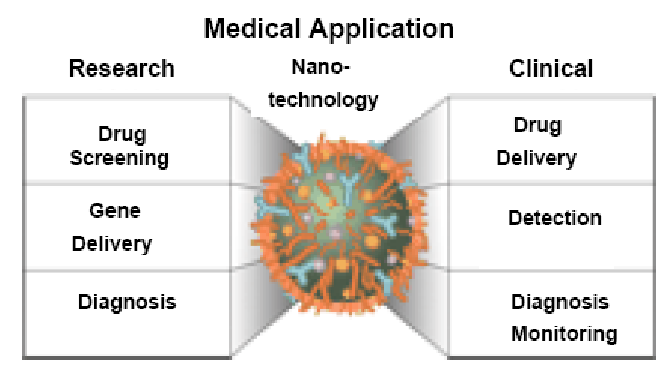Nanotechnology has become one of the most transformative forces in modern science, driving innovation across healthcare, energy, and technology. At it
Nanotechnology has become one of the most transformative forces in modern science, driving innovation across healthcare, energy, and technology. At its core, nanotechnology applications in medicine involve manipulating materials at the atomic and molecular scale—typically between one and one hundred nanometers. At this scale, substances exhibit remarkable properties, including enhanced strength, reactivity, and conductivity.
From targeted cancer treatments to high-efficiency batteries, nanotechnology’s influence extends across every major industry. This article explores how nanotechnology is transforming medicine, powering next-generation devices, and shaping the future of scientific advancement.
What Are the Key Applications of Nanotechnology?
The applications of nanotechnology span medicine, materials science, and renewable energy. In healthcare, nanotechnology applications in medicine are revolutionizing treatment and diagnosis.
- Targeted Drug Delivery: Nanoparticles carry drugs directly to diseased cells, minimizing side effects and improving treatment precision—especially in cancer therapy.
- Advanced Diagnostics: Nanosensors detect disease biomarkers early, allowing doctors to diagnose and treat illnesses before they become life-threatening.
- Medical Imaging: Nanoparticles enhance MRI and CT scans, giving doctors clearer, more accurate results.
Beyond healthcare, nanotech is reshaping other fields:
- Electronics: Nanoscale transistors make devices smaller, faster, and more energy-efficient.
- Materials Science: Nanomaterials like graphene create lighter and stronger materials for aerospace, automotive, and construction industries.
- Renewable Energy: Nanostructured solar panels capture sunlight more efficiently, powering the shift toward sustainable energy.
How Nanotechnology Is Transforming Medicine
The medical field is witnessing a revolution thanks to nanotechnology applications in medicine that focus on precision and prevention.
1. Targeted Drug Delivery
Nanoparticles allow medications to release slowly and accurately at the disease site. This reduces harmful side effects and increases effectiveness, especially in chemotherapy and chronic illness management.
2. Enhanced Diagnostics
Nanotechnology enables ultra-sensitive detection tools that identify diseases long before symptoms appear. Early detection improves treatment outcomes dramatically.
3. Future Medical Innovations
- Nanorobots: Microscopic robots could one day perform surgeries or repair damaged tissues at the cellular level.
- Gene Therapy: Nanoscale carriers safely deliver genetic material into cells to fix inherited disorders.
4. Safety and Ethical Challenges
As with any emerging technology, nanotech raises ethical and safety concerns. Scientists continue studying how nanoparticles affect long-term health and the environment, ensuring responsible innovation.
Nanotechnology in Everyday Life
Beyond hospitals and laboratories, nanotechnology applications influence products we use daily:
- Consumer Electronics: Nanomaterials boost battery performance, screen durability, and efficiency.
- Environmental Protection: Nanoscale filters and catalysts purify air and water more effectively.
- Textiles and Coatings: Nanotech makes fabrics waterproof, self-cleaning, and stronger without added weight.
- Agriculture and Food: Nanotechnology enhances packaging, nutrient delivery, and crop protection—extending freshness and yield.
These innovations show how nanotech quietly powers convenience and sustainability in modern life.
The Future of Nanotechnology in Technology
Looking ahead, nanotechnology in technology will continue to redefine innovation.
- Computing: Nanoscale transistors are driving faster, smaller, and more efficient chips, while quantum computing leverages nanostructures for massive processing power.
- Energy Storage: Advanced materials like graphene and silicon nanowires extend battery life for electric vehicles and renewable energy systems.
- Manufacturing: Nanomaterials create stronger, lighter, and eco-friendly products across industries.
However, challenges remain—cost, accessibility, and environmental impact must be balanced to ensure global benefits. Collaboration among scientists, engineers, and policymakers is key to realizing nanotech’s full potential.
Conclusion
Nanotechnology applications in medicine and technology are transforming the modern world. From precision treatments and diagnostic breakthroughs to sustainable energy and computing, nanotech continues to redefine what’s possible.
This “tiny science” is powering some of the biggest advancements in human history. As research continues, nanotechnology will remain central to future medicine, innovation, and sustainability—proving that even the smallest particles can drive monumental change.
Frequently Asked Questions
- What are nanotechnology applications in medicine?
They include targeted drug delivery, disease diagnostics, imaging, and nanorobotics for future treatments. - How does nanotechnology improve healthcare?
It makes treatments more precise, reduces side effects, and enables earlier disease detection. - What other industries use nanotechnology?
Electronics, energy, textiles, and environmental engineering all use nanomaterials to improve performance and efficiency. - What are the risks of nanotechnology?
Possible long-term effects on health and the environment remain under study, highlighting the need for responsible innovation.


COMMENTS